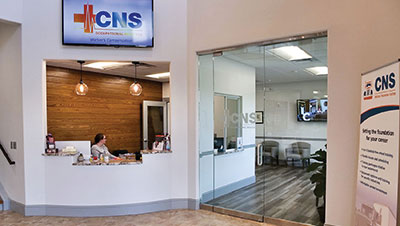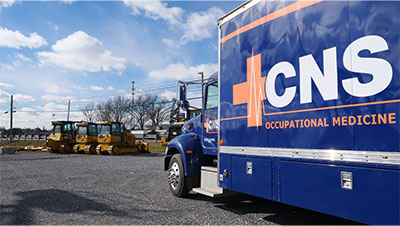We all know how important the OSHA 300 log is, but do you know when it is required during a work-related injury or illness?
The Log of Work-Related Injuries and Illnesses (Form 300) is used to classify work-related injuries and illnesses and to note the extent and severity of each case.
When an incident occurs, companies are required to use the Log to record specific details about what happened and how it happened.
As I am sure you have experienced with your own work-related cases, each case is unique and even the most minor variations can make the difference between a recordable or not.
Let’s help untangle this recordkeeping confusion and how to accurately manage your OSHA 300 log.
What is required to comply to OSHA 300 regulations?
According to OSHA standard 1904.7, employers with more than 10 employees are required to keep a record of serious work-related injuries and illnesses.
The first note of confusion is that this criterion applies at the establishment level, not to the entire company. If a company has several business establishments engaged in different classes of business activities, some of them may be required to keep records, while others may be partially exempt.
You can take a look at the list of low-risk industries that are exempt.
However, ALL employers are required to report work-related injuries or illnesses, regardless of exemption status, if it results in any of the following:
- Death of any employee within 8 hours to 30 days after the work-related incident
- An in-patient hospitalization within 24 hours
- An employee’s amputation or an employee’s loss of an eye within 24 hours
OSHA defines in-patient hospitalization as a formal admission to the in-patient service of a hospital or clinic for care or treatment. Treatment in an Emergency Room only is NOT reportable.
An amputation is the traumatic loss of all or part of a limb or other external body part. This would include fingertip amputations with or without bone loss; medical amputations resulting from irreparable damage; and amputations of body parts that have since been reattached.
Which employees are recordable?
Employers must record OSHA 300 Log injuries and illnesses of all employees on your payroll including:
- Labor
- Executive
- Hourly
- Salary
- Part-time
- Seasonal
- Migrant workers
Additionally, employers are required to record OSHA 300 injuries and illnesses that occur to employees who are NOT on your payroll if you supervise these employees on a day-to-day basis, such as temporary workers.
Which work-related injuries and illnesses should be recorded?
OSHA considers these injuries and illnesses as “recordable” and must be added on your log.
- Any work-related fatality, amputation, loss of an eye.
- Any work-related injury or illness that results in loss of consciousness, days away from work, restricted work, or transfer to another job.
- Any work-related injury or illness requiring medical treatment BEYOND first aid.
- Any work-related diagnosis case of cancer, chronic irreversible diseases, fractured or cracked bones or teeth, and punctured eardrums.
- There are also special recording criteria for work-related cases involving: needlesticks and sharps injuries; medical removal; hearing loss; and tuberculosis.
Hearing loss is when an employee’s audiogram reveals:
- that the employee has experienced a Standard Threshold Shift (STS) in hearing in one or both ears (averaged at 2000, 3000, and 4000 Hz), and
- the employee’s total hearing level is 25 decibels (dB) or more above audiometric zero (also averaged at 2000, 3000, and 4000 Hz) in the same ear(s) as the STS.
Now, let’s break this down a bit further.
As a golden rule, remember that First Aid IS NOT recordable and Medical Treatment IS recordable.
When it comes to first aid, this includes:
- Removing splinters or foreign material from areas other than the eye by irrigation, tweezers, cotton swabs or other simple means
- Using eye patches
- Removing foreign bodies from the eye using only irrigation or a cotton swab
- Drilling of a fingernail or toenail to relieve pressure
- Drinking fluids for relief of heat stress
- Draining fluid from a bister
- Using a non-prescription medication at nonprescription strength, Ex: Ibuprofen 400mg every 6 hours for pain
- Tetanus immunization
- Cleaning, flushing or soaking wounds
- Wound coverings such as bandages, Band-Aids™, gauze pads, etc.
- Butterfly bandages or Steri-Strips™
- Non-rigid means of support, such as elastic bandages, SAM splints, ACE wraps, non-rigid back belts, finger guards, etc.
- Temporary immobilization devices used to transport an accident victim (e.g., splints, slings, neck collars, back boards, etc.).
- Massage
- Heat packs/Ice packs
When it comes to medical treatment, this includes:
- Any prescription medication, for example narcotic, antibiotic
- Prescription to use a non-prescription medication at prescription strength (i.e. – Ibuprofen 800mg)
- Rabies Vaccine
- Hepatitis B Vaccine (post-exposure)
- Sutures
- Staples
- Devices with rigid stays or other systems designed to immobilize parts of the body, for example cast, wrist splint with a metal stay (not-flexible/bendable)
- Physical Therapy
- Chiropractic Treatment
Lastly, keep in mind that medical treatment DOES NOT include visits to practitioners for observation and/or evaluation only, and diagnostic procedures such as for bloodwork or x-ray.
What about medical removal?
Medical removal is when an employee is removed from an exposure by either restricted work activity or days away from work.
For example, an employee is temporarily removed from painting duties due to elevated blood lead levels.
If an employee is medically removed under the medical surveillance requirements of an OSHA standard, you must record the case on the OSHA 300 Log.
OSHA standards that have medical removal provisions:
- Lead
- Cadmium
- Methylene chloride
- Formaldehyde
- Benzene
If you voluntarily removed an employee from exposure before the medical removal criteria in an OSHA standard is met, you do not need to record the case on the OSHA 300 Log.
How CNS Occupational Medicine can help
We offer a number of physicals related to DOT, Non-DOT Medical Services and OSHA-Related work.
Some physicals that we offer include DOT physicals, Asbestos Physicals, Respirator Physicals, Immigration Physicals, HAZMAT/HAZWOPER Physicals, Silica Physicals, Audiogram testing, and more.
Our providers have a thorough understanding of federal and state regulations including Occupational Health and Safety Administration (OSHA) and Department of Transportation (DOT) regulations, so they can make the best treatment plans and perform regulatory examinations.
Schedule your Respirator Physical, Medical Exam, and/or Fit Test today or talk with an Occupational Healthcare Specialist about a Work Injury Treatment Plan.
For more information, contact us at 800.551.9816 or info@cnsoccmed.com.










